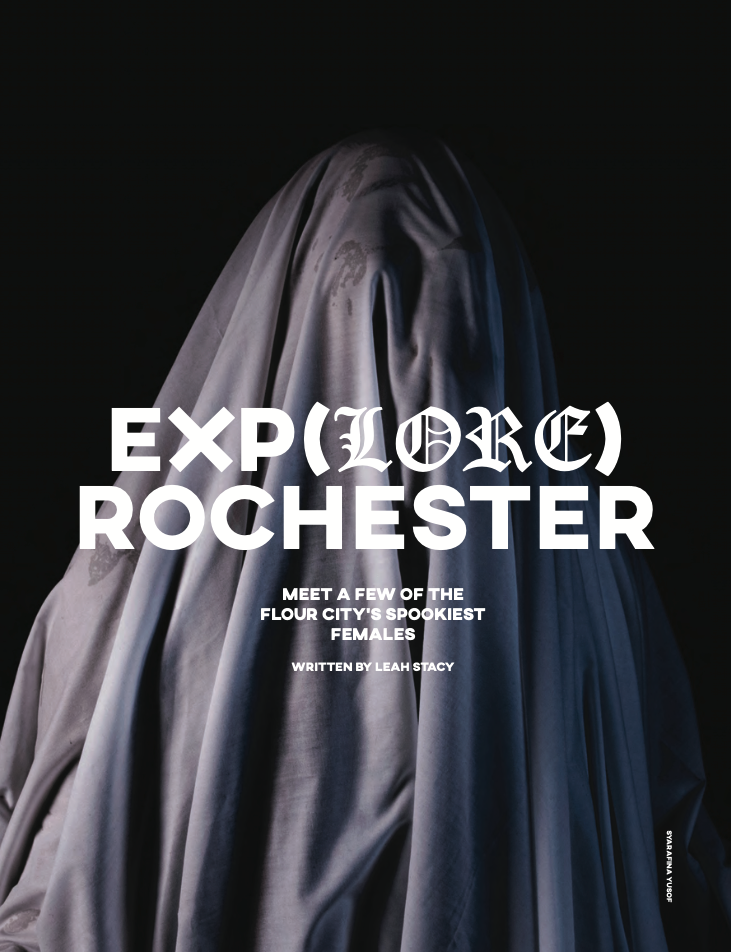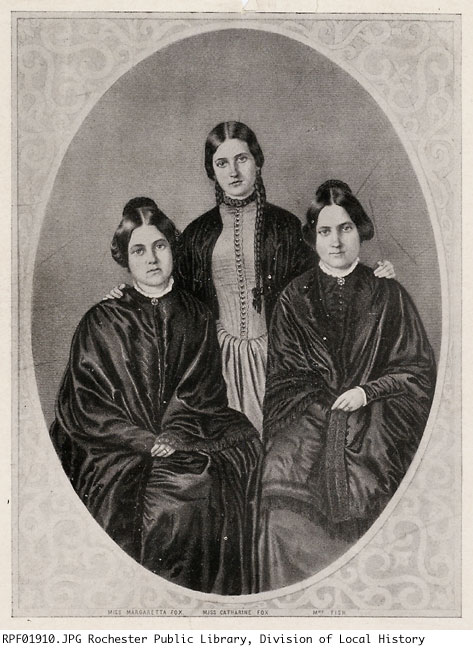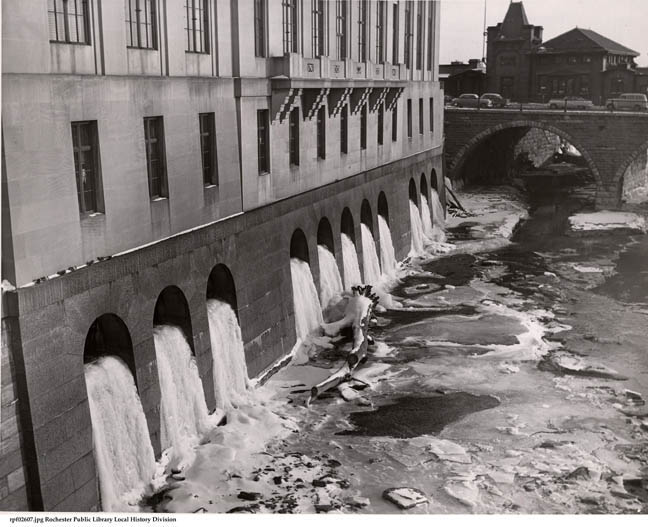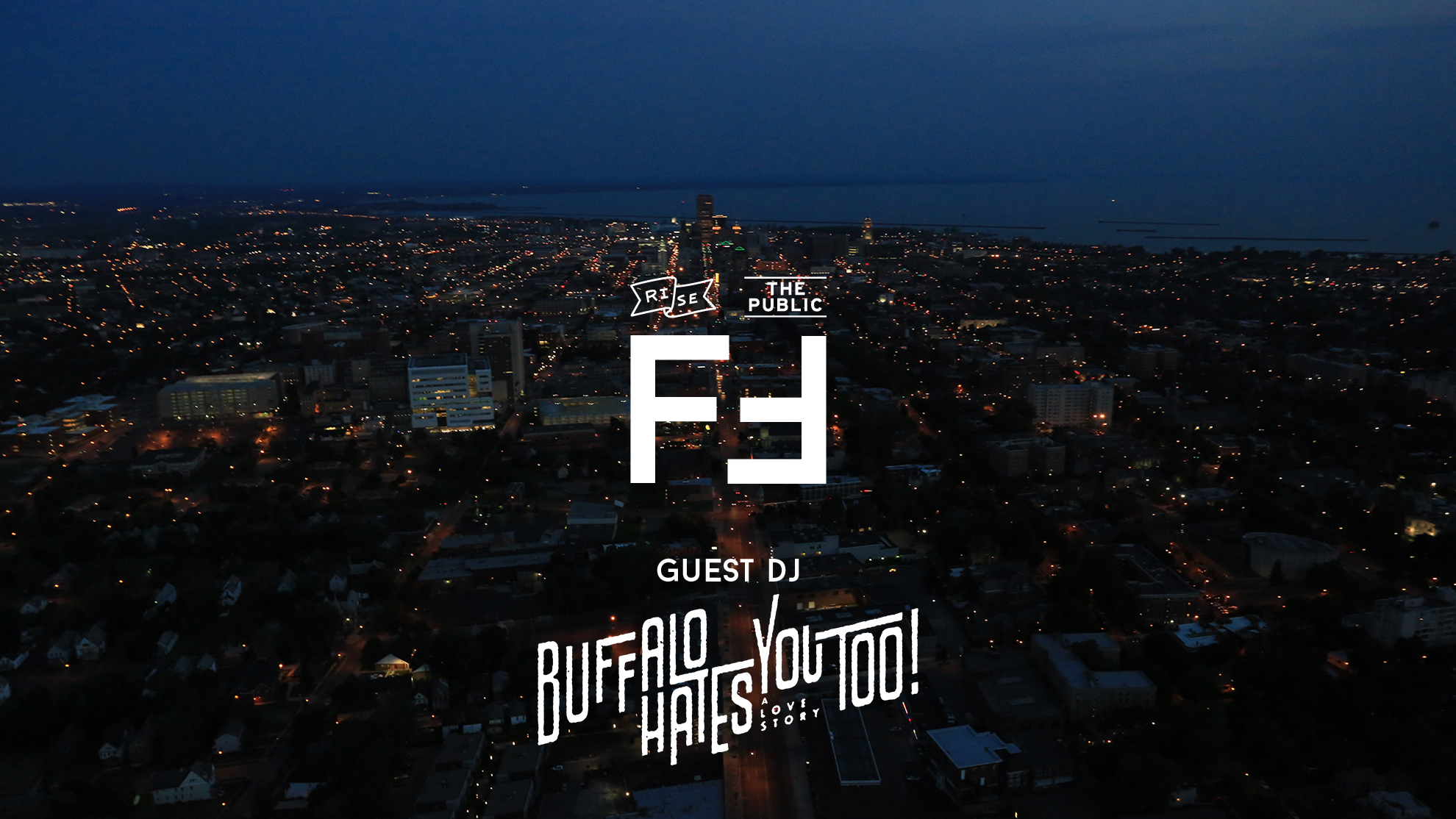Written by Leah Stacy
Photos Courtesy Rochester Public Library

There’s a fair bit of spirited history lurking under the surface of New York State’s third most populous city. Though it was officially settled by the British just after the Revolutionary War in 1803 by its namesake Colonel Nathaniel Rochester, the region had long been home to the Seneca Nation, one of six in the Iroquois League, a culture known for its deep belief in the powers of the spirit world. With its position along the Genesee River, the city of Rochester quickly transformed into a water-powered boomtown – one of America’s first – known for flour mills, manufacturing, and eventually – the Big Three (Kodak, Xerox, and Bausch and Lomb). And like any city with such a vibrant, varied few centuries, a few lingering ghost stories cropped up along the way.
A Fox Upon You
In 1848, Spiritualism was born just outside of Rochester in the town of Newark, heavily influenced by the three Fox sisters’ discovery of “rappings,” tapping and cracking-type noises that would occur, they claimed, when other-worldly spirits were present. The eldest sister, Leah, became a manager of sorts for the younger two, Kate and Margaret, who began hearing the rappings in the family home as adolescents. Neighbors were called in to confirm the paranormal activity, and the sisters devised a “code” to communicate beyond the veil. The Fox sisters’ public communing with spirits through said rappings and their successful careers as mediums continued for nearly 40 years, until Margaret exposed their methods as an elaborate hoax. She and Kate both died in poverty, with alcoholism issues, a few years after the confession. But the foundations of Spiritualism – and paranormal awareness – were set, and the region would always feel the effects.

White Walker
Just off the peaceful shores of Lake Ontario in Durand-Eastman Park north of the city in Irondequoit, there is a winding set of mossy stairs leading to a crumbling stone wall and turret in a grove of leafy trees. This site, reminiscent of a fairytale, was christened “The White Lady’s Castle” – you can even GPS your way there – and made its way to Atlas Obscura and other travel-esque publications as a haunted destination to check off the bucket list. But of course, it’s not a castle at all – local historians will confirm it’s the remnants of an old refectory (dining hall), built to cater to hungry swimmers and picnicking families in the vintage glory days of Lake Ontario summering, pre-Great Depression.
So where does the White Lady fit in? The White Lady is a ghost story trope that exists all over the world – but if you ask longtime Rochesterians, this one has some legs.
There’s no evidence she existed, but local lore says “Eelissa” lived in the early 1900s, a farmer’s wife and overprotective mother of a teenage daughter who went for a walk one night by the lake and never returned. (A few variations say she was an abused wife who killed her husband and his lover, but the former myth has been the stronger of the two, and was allegedly confirmed by a local psychic.) Some think the daughter ran away with a lover, others suspect a more morbid ending for the young woman. Many claim they’ve seen the White Lady walking the lake at night with her two black German Shepherds, searching for the lost teen. Her perceived image even emerged in a nearby damaged tree after a storm in 2017; a willowy figure in a flowing white dress. Because it may have been a suitor who spirited her daughter away, the White Lady is particularly unwelcoming to young men near the site. There’s a series of candlelight ghost walks devoted to her story held each Halloween, for those who want a potential guided sighting, and Rochester-based director Frank LaLoggia produced a horror movie in 1988 loosely based on the tale called Lady in White (it’s available on YouTube in its entirety for inquiring minds).
Woman Overboard
In 1902, an overnight worker at the Erie Canal lock on Court Street (now the site of the Central Library) plucked a battered hat from a sidewalk overlooking the Genesee River. Beyond it, signs of a struggle in the disheveled dirt by the canal and the mill race – the shoes seemed to belong to a man and a woman. The story that would later be published in the Democrat and Chronicle revealed it was Mr. Andrew Young and his wife, Laura, a couple in their early 20s, who had quarreled after they were drinking with another couple in a nearby pub. Laura wanted to go home, and Andrew drunkenly returned to the pub. A few days later, Laura’s body was found in the river aqueduct, with no sign of violence on her. Her death was ruled as a suicide, and the precise spot where she was found would later become the Rochester Subway, with the Central Library built over part of it. The SyFy Channel’s “Ghost Hunters” filmed an episode about the story in 2012, and librarians currently working in the building attest to its haunting by Laura – a sad, somewhat docile ghost who they suspect is looking for justice – or, maybe just her hat.




